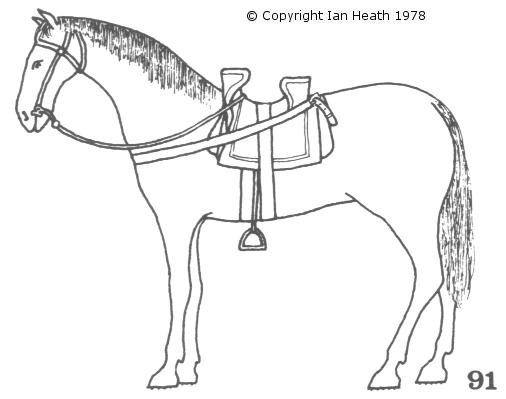
Try Amazon Audible Plus
FRANKISH HORSE
An extract from Armies and Enemies of the Crusades 1096-1291by Ian Heath



91. FRANKISH HORSE
Because the Franks depended so heavily on the charge of their mailed knights horses were extremely valuable in Outremer, even more so than in Europe because of the constant danger of injury or loss in battle as a result of Turkish archery tactics. Restor, the custom of replacing a vassal's horse if killed or injured in battle (see page 6 in 'Armies of Feudal Europe'), may have actually evolved in Frankish Syria in the early-12th century; Usamah records in an anecdote how Tancred, told by his men during a battle of c. 1110 that they feared for their horses, promised to replace all those hurt in the fighting ('The horses are my property. Whosoever of you loses his horse shall have it replaced.') and this appears to be the earliest recorded instance of Restor.
Horses in Outremer came chiefly from Syria and Cyprus. Arab steeds were particularly highly prized, and high prices were also paid for Kurdish and Persian horses, 'fine steeds' of 'great value' according to Marco Polo. Turcoman (Turqueman or Turquan) horses were also used but these were clearly smaller, like the hardy horses of Cilician Armenia, both therefore being ridden mainly by sergeants (though Templar statutes indicate that Commanders, as well as the Grand Master and other officers, also had a Turqueman each).
European horses also found their way to the Holy Land with the various crusading armies but if the sources are to be believed most of them did not last long, the majority of those that came overland dying of exhaustion, starvation or wounds long before they reached Syria. In addition the Military Orders frequently had horses sent out to them by ship from their European Convents: their regulations also specified that no brother was allowed to take a horse from Outremer back to Europe if he should be 'posted'. The Moslems, incidentally, did not think much of European horses, despising them as 'overlarge in the body and lacking spirit'.
Most knights were expected to serve with 2 or 3 spare horses, and even sergeants sometimes had to have one remount.